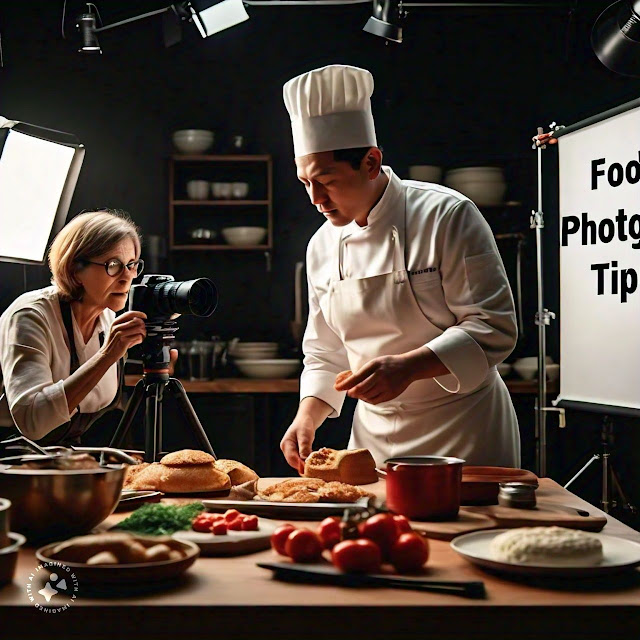
Food photography is a delightful art form that captures the essence and beauty of culinary creations, enticing viewers with mouthwatering images. To capture stunning food photos, it's essential to pay attention to composition, lighting, and styling. Start by selecting a visually appealing background and arranging the food in an attractive manner. Experiment with different angles and perspectives to find the most flattering presentation for the dish.
Lighting is perhaps the most crucial element in food photography. Natural light is ideal for capturing vibrant colors and textures, so try to shoot near a window or outdoors whenever possible. Avoid harsh overhead lighting, which can create unflattering shadows, and instead opt for soft, diffused light that gently illuminates the food from the side or front.
In addition to natural light, consider using reflectors or diffusers to control the intensity and direction of light. Reflectors bounce light back onto the food, helping to fill in shadows and add dimension, while diffusers soften harsh light and create a more even, flattering illumination. Experiment with different lighting setups to achieve the desired mood and atmosphere for your photos.
When it comes to styling food, less is often more. Keep the composition clean and uncluttered, focusing on the hero ingredients and avoiding distractions. Pay attention to details like garnishes, sauces, and utensils, making sure they complement rather than overpower the main dish. Use props sparingly to enhance the mood and theme of the photo, but be careful not to overwhelm the scene.
Another important aspect of food photography is color coordination. Choose props, backgrounds, and garnishes that complement the colors of the food, creating a harmonious and visually appealing composition. Consider the mood and atmosphere you want to convey – whether it's rustic and cozy, elegant and sophisticated, or bright and cheerful – and select props and backgrounds accordingly.
In addition to aesthetics, consider the narrative and story behind the food. Think about the context in which the dish is enjoyed – whether it's a cozy family dinner, a romantic date night, or a festive holiday feast – and try to capture the essence of that experience in your photos. Use props, backgrounds, and styling techniques to evoke emotions and tell a compelling visual story.
Furthermore, pay attention to detail and strive for perfection in every aspect of the photo. Check for any smudges, spills, or imperfections on the plate or props, and make adjustments as needed. Use a tripod to ensure sharp focus and stability, especially when shooting in low light or using slow shutter speeds. Take multiple shots from different angles and perspectives, experimenting with composition and framing to find the most captivating image.
Finally, don't be afraid to experiment and have fun with food photography. Explore different styles, techniques, and creative ideas, and let your imagination run wild. Whether you're capturing a simple bowl of pasta or an elaborate multi-course meal, approach each photo shoot with curiosity, passion, and a willingness to push the boundaries of your creativity. With practice and patience, you'll hone your skills and develop a signature style that delights and inspires viewers.


Post a Comment